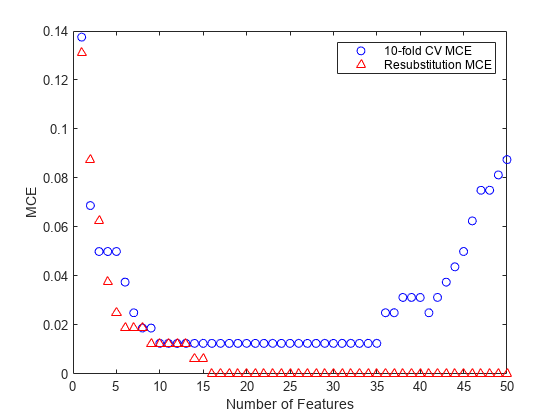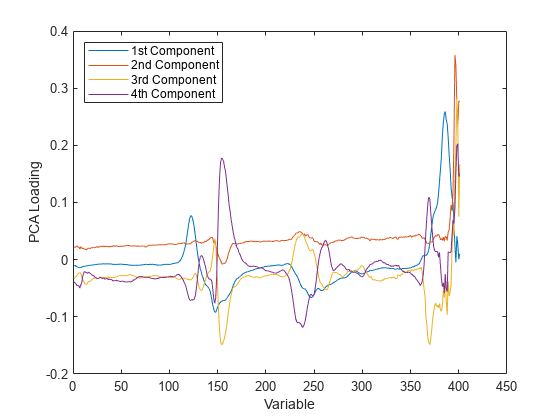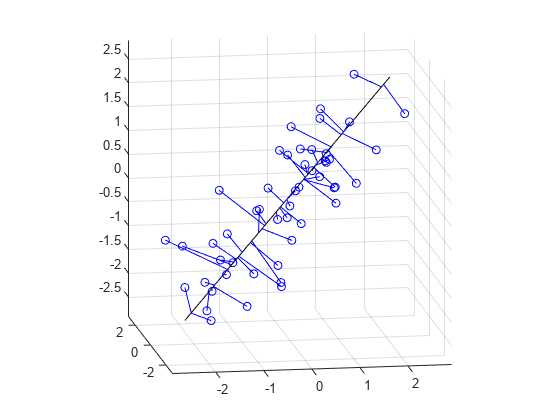Dimensionality Reduction and Feature Extraction
PCA, factor analysis, feature selection, feature extraction,
and more
Feature transformation techniques reduce the dimensionality in the data by transforming data into new features. Feature selection techniques are preferable when transformation of variables is not possible, e.g., when there are categorical variables in the data. For a feature selection technique that is specifically suitable for least-squares fitting, see Stepwise Regression.
Live Editor Tasks
| Reduce Dimensionality | Reduce dimensionality using Principal Component Analysis (PCA) in Live Editor (Since R2022b) |
Functions
Objects
Topics
Feature Selection
- Introduction to Feature Selection
Learn about feature selection algorithms and explore the functions available for feature selection. - Sequential Feature Selection
This topic introduces sequential feature selection and provides an example that selects features sequentially using a custom criterion and thesequentialfsfunction. - Neighborhood Component Analysis (NCA) Feature Selection
Neighborhood component analysis (NCA) is a non-parametric method for selecting features with the goal of maximizing prediction accuracy of regression and classification algorithms.
- Regularize Discriminant Analysis Classifier
Make a more robust and simpler model by removing predictors without compromising the predictive power of the model. - Select Predictors for Random Forests
Select split-predictors for random forests using interaction test algorithm.
Feature Extraction
- Feature Extraction
Feature extraction is a set of methods to extract high-level features from data. - Feature Extraction Workflow
This example shows a complete workflow for feature extraction from image data. - Extract Mixed Signals
This example shows how to usericato disentangle mixed audio signals.
t-SNE Multidimensional Visualization
- t-SNE
t-SNE is a method for visualizing high-dimensional data by nonlinear reduction to two or three dimensions, while preserving some features of the original data. - Visualize High-Dimensional Data Using t-SNE
This example shows how t-SNE creates a useful low-dimensional embedding of high-dimensional data. - tsne Settings
This example shows the effects of varioustsnesettings. - t-SNE Output Function
Output function description and example for t-SNE.
PCA and Canonical Correlation
- Principal Component Analysis (PCA)
Principal Component Analysis reduces the dimensionality of data by replacing several correlated variables with a new set of variables that are linear combinations of the original variables. - Analyze Quality of Life in U.S. Cities Using PCA
Perform a weighted principal components analysis and interpret the results.
Factor Analysis
- Factor Analysis
Factor analysis is a way to fit a model to multivariate data to estimate interdependence of measured variables on a smaller number of unobserved (latent) factors. - Analyze Stock Prices Using Factor Analysis
Use factor analysis to investigate whether companies within the same sector experience similar week-to-week changes in stock prices. - Perform Factor Analysis on Exam Grades
This example shows how to perform factor analysis using Statistics and Machine Learning Toolbox™.
Nonnegative Matrix Factorization
- Nonnegative Matrix Factorization
Nonnegative matrix factorization (NMF) is a dimension-reduction technique based on a low-rank approximation of the feature space. - Perform Nonnegative Matrix Factorization
Perform nonnegative matrix factorization using the multiplicative and alternating least-squares algorithms.
Multidimensional Scaling
- Multidimensional Scaling
Multidimensional scaling allows you to visualize how near points are to each other for many kinds of distance or dissimilarity metrics and can produce a representation of data in a small number of dimensions. - Classical Multidimensional Scaling
Usecmdscaleto perform classical (metric) multidimensional scaling, also known as principal coordinates analysis. - Classical Multidimensional Scaling Applied to Nonspatial Distances
This example shows how to perform classical multidimensional scaling using thecmdscalefunction in Statistics and Machine Learning Toolbox™. - Nonclassical Multidimensional Scaling
This example shows how to visualize dissimilarity data using nonclassical forms of multidimensional scaling (MDS). - Nonclassical and Nonmetric Multidimensional Scaling
Perform nonclassical multidimensional scaling usingmdscale.
Procrustes Analysis
- Compare Handwritten Shapes Using Procrustes Analysis
Use Procrustes analysis to compare two handwritten numerals.



